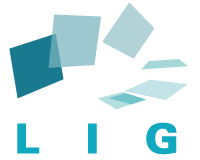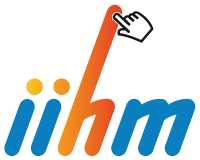Internship: Exploring use case scenarios using BEXHI
Context
From mobile phones to tablets, we now use interactive surfaces on a daily basis empowering us to complete many of our tasks. The current evolution of our lifestyle will, arguably, have the tendency to reinforce our nomadic usage of devices. To improve the interaction bandwidth of our devices, researchers are seeking to break the expressiveness (eg. the number of modalities used to transmit the input vocabulary) barrier. One way of doing so is to make our devices more organic, through Shape Changing Interfaces (SCI) [1]. Organic User Interfaces [2] are SCIs in which the display is an input, that changes its shape through manual/automated deformations, enriching the interaction vocabulary. There are many directions explored from screen(s) reconfiguration, such as Cubimorph [3] to bendable screens, suach as FoldMe [4]. The latter category even starts to be commercially viable, for instance with the Huawei Mate X and the Samsung Galaxy Fold. The technology is catching up with research concepts, and fully bendable screens are on the horizon. Concurrently, new features are studied, such as expansion. Expandable surfaces, such as EXHI-Bit [5], aim at dynamically changing their form factor by modifying the area of the screen real-estate. We combined both modalities and provided the research community with BEXHI a mechanical structure for exploring devices that combine expansion and bending.
We display digital content by directly projecting on the tablet. We track the surface with an Optitrack system, and project our digital content using an external projector. We provide a first version of a python library for tracking the tablet, projecting an application screen on the tablet surface as well as a touch tracking engine to feed raw interaction data to the application.
Expected results
The goal of the project is to explore the use of flexible and expandable surfaces. The student will propose different use case scenarios in which bending and/or expansion are used to improve the classical mechanism of interactions or create new ways of manipulating digital content. One or several of those scenarios will then be implemented on the BEXHI system.
[1] Marcelo Coelho and Jamie Zigelbaum. 2011. Shape-changing Interfaces.
[2] Roel Vertegaal and Ivan Poupyrev. 2008. Introduction.
[3] A. Roudaut, D. Krusteva, M. McCoy, A. Karnik, K. Ramani, and S. Subramanian. 2016. Cubimorph: Designing modular interactive devices.
[4] Mohammadreza Khalilbeigi, Roman Lissermann, Wolfgang Kleine, and Jürgen Steimle. 2012. FoldMe: Interacting with Double-sided Foldable Displays.
[5] Michaël Ortega, Jérôme Maisonnasse, and Laurence Nigay. 2017. EXHI-bit: A Mechanical Structure for Prototyping EXpandable Handheld Interfaces.
[6] Ortega, M. & Goguey, A. 2019. BEXHI: A Mechanical Structure for Prototyping Bendable and EXpandable Handheld Interfaces.

